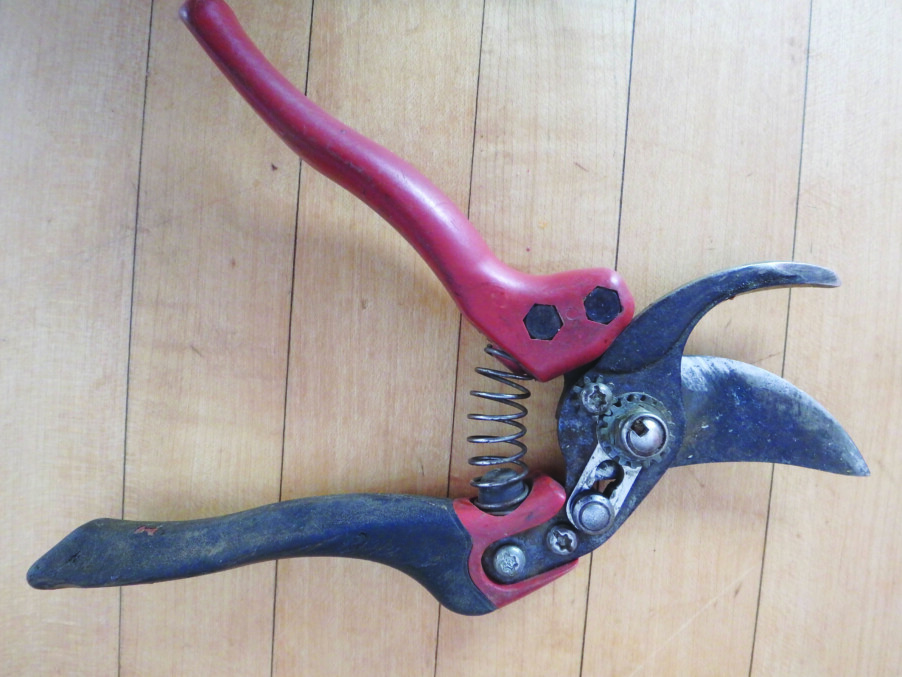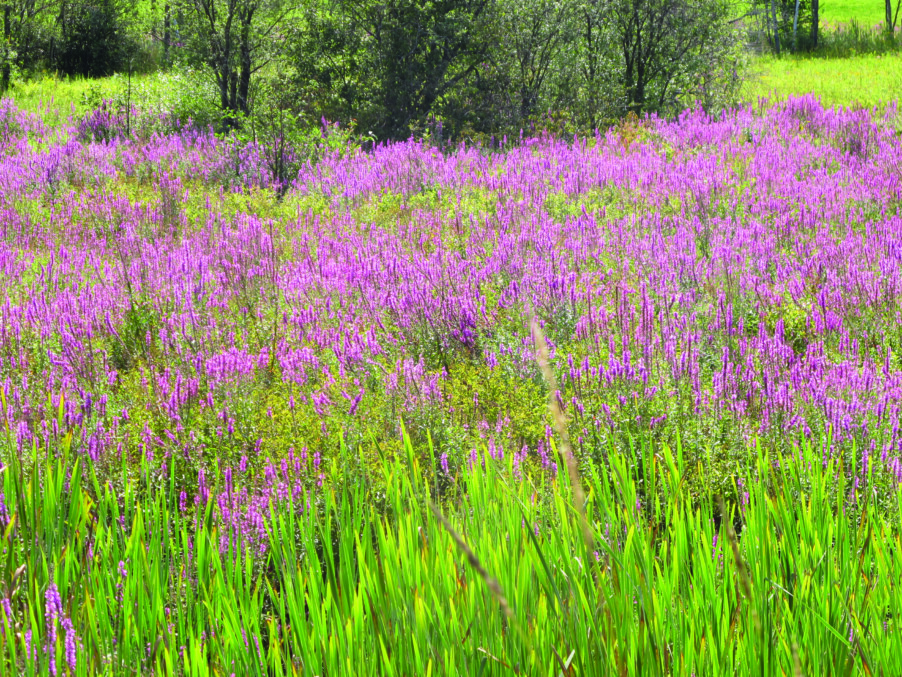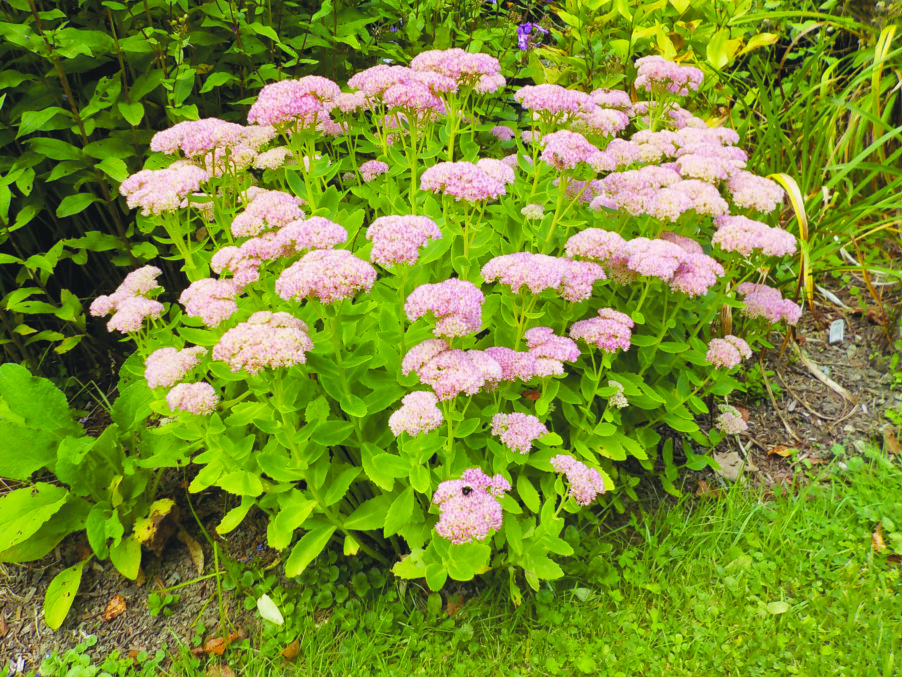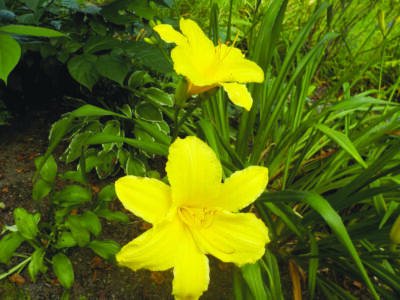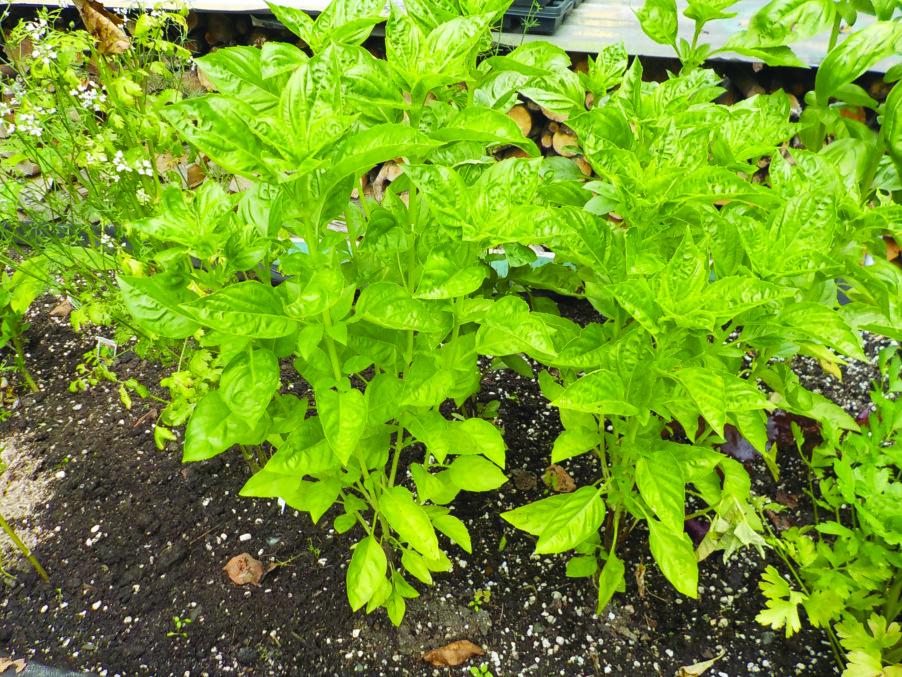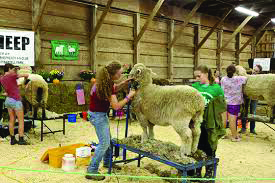With a little practice you’ll get it right
Fall is a good time to prune deciduous trees and shrubs. Once the leaves have dropped you can see the form — and the clutter — and decide what to take out. But before you begin, think about sharpening up your pruning tools, replacing blades, or buying new ones. Dull pruning tools are like dull kitchen knives: They’ll do the job, but not very well.
How tough is it to sharpen your own pruners? It’s really not that difficult. The biggest problem people have is overcoming their initial fear of ruining their tool by doing it wrong. You need to learn the proper angle, have the proper sharpening tool and have the patience to do it right. Experience will tell you if you have done well, and you won’t ruin those Felcos (the most common brand of bypass pruners out there) even if you don’t get it quite right the first time. It’s fun, once you get the hang of it.
What do you need for sharpening tools? The best sharpeners for hardened steel tools are made using synthetic monocrystalline diamonds embedded in nickel. I like the diamond sharpeners because they are very efficient. As a rule, five to 10 minutes on a conventional oilstone is equal to about a minute with a diamond sharpener. Coarse files are fine for most pruners, while fine files are better for scissors and knives that are kept very sharp.
What’s the first thing you need to do when starting off? I clean the pruners, which usually are covered with dried sap and dirt and sometimes rust. You can use soap and water, but I prefer a product called Sap-X. I let it work for 30 seconds and then scrub the blades, first with coarse steel wool and then, after reapplying the solvent, with a green scrubbie or fine steel wool to get the rust. If you don’t clean your pruners prior to sharpening, all of that debris will end up clogging your sharpener.
Then what? Grasp the pruner in your left hand (if you are right-handed), holding on to the handle that extends to the cutting blade. The cutting blade is the one that moves when you open and shut the pruners and is the only one that you need to sharpen. Steady it by placing the pruner on the edge of a table. Working under a bright light helps, because it will help you to see the shiny edge that develops as you sharpen.
Start sharpening as near to the throat of the pruners as you can (where the two handles join). Place the narrow tip of the tapered file at the throat, and push the file away from you, sliding it down the length of the beveled edge. With practice you will be able to use the full length of the file as you run it down the blade.
How will you know if you are sharpening at the correct angle? What you’re trying to do is restore the edge of your pruners to the original angle set when it was manufactured. Before you start take a marker and “color” the steel on the beveled edge of the moveable blade. This will help you to see what you’re doing — you want to remove the marks evenly across the beveled edge with your sharpener. If only a small portion of the blade turns shiny, you need to change the angle of your file slightly.
How much pressure should you apply on your sharpening tool? Not much — let the diamonds do the work. Sharpening will feel awkward at first, but gets easier as you do it. Use nice slow even strokes.
If you don’t have pruners, buy the best ones you can afford. If you take care of them, they will outlast you. Yes, you can buy some that look good for $10, but the quality of the steel will not be the same as buying good ones. Plan on spending $50 or more. If you can try them out before buying some — or use a friend’s pruners — that would help you make a good choice. They all come in various hand sizes, and some are right- or left-handed.
I have tried many kinds of pruners, but my favorites are made by Bahco, a French company. I’ve had some for 20 years that have a good ergonomic design and will cut branches up to 1.25 inches in diameter. I got mine from a company in Massachusetts, OESCO (1-800-634-5557 or www.OESCOinc.com).
And what if you can’t seem to get sharpening right, then what? I’m sure with a little practice you’ll get it right! But good pruners have replaceable blades, so if you’ve been cutting steel fencing with your pruners and ruined them, you can buy a new blade.
A replacement blade for a pair of Felco pruners (which cost $60 or more new) only costs about $20. Changing a blade requires a few basic tools, some common sense, and less than 5 minutes of work. And you need to look carefully at your pruners to see which model you have. Felcos have a number on the stationary blade, depending on the model you have, anywhere from 2 to 12.
As a last resort, look in the Yellow Pages under “Sharpening Services” and you should be able to find someone to do it for you — and maybe even show you how to do it yourself next time.
Henry lives in Cornish, N.H. You can reach him at henry.homeyer@comcast.net. He is the author of four gardening books and offers PowerPoint presentations to gardening clubs and libraries.
Featured photo by Henry Homeyer.

